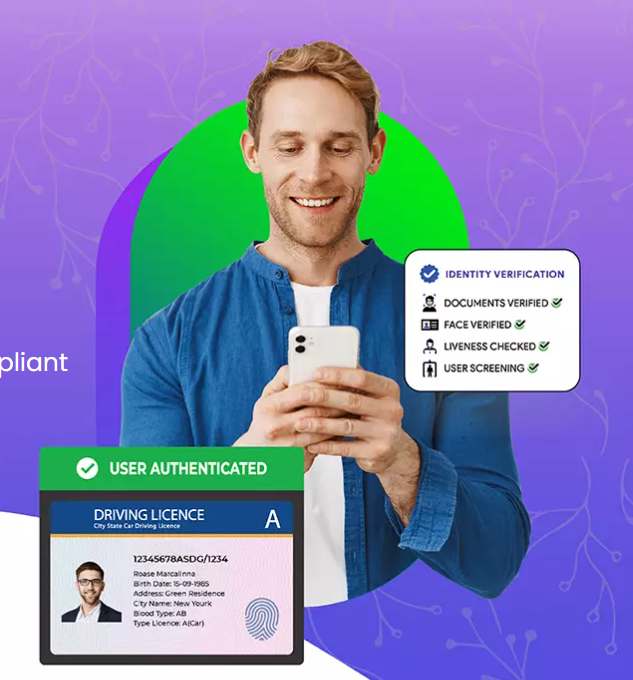
In today’s digital age, where online security and seamless user experiences are paramount, biometric technologies like face recognition have gained immense popularity. However, with advanced technology comes sophisticated threats. Two critical concepts in the realm of biometric security are face liveness detection and camera injection attacks. This blog explores these topics, highlighting their significance and how businesses can safeguard their systems against emerging threats.
What Is Face Liveness Detection?
Face liveness detection is a cutting-edge technology designed to distinguish between a real, live person and a spoofed representation of a face. This mechanism ensures that biometric systems are not fooled by photos, videos, masks, or other fraudulent methods.
Key Features of Face Liveness Detection:
-
Passive vs. Active Detection:
-
Passive Detection: Analyzes subtle signs such as skin texture, reflections in the eyes, or head movements without requiring user interaction.
-
Active Detection: Involves user participation, like blinking, smiling, or turning their head, to confirm liveness.
-
-
AI-Powered Analysis:
-
Advanced algorithms leverage machine learning and deep learning to analyze facial attributes and behaviors.
-
-
Multi-Factor Authentication:
-
Often combined with other biometric checks like fingerprint or voice recognition for added security.
-
Applications of Face Liveness Detection:
-
Online Banking: Prevents fraudulent account access during KYC processes.
-
E-Commerce: Ensures secure online transactions.
-
Access Control: Enhances security in physical and digital access points.
-
Healthcare: Safeguards patient records and telemedicine consultations.
Why Is Face Liveness Detection Important?
The necessity for robust liveness detection stems from the rise in identity spoofing attacks. Fraudsters are continuously evolving their techniques to bypass traditional biometric systems. Without liveness detection, systems are vulnerable to simple hacks like holding up a photo or playing a video of a registered user.
Benefits of Face Liveness Detection:
-
Enhanced Security: Mitigates the risk of unauthorized access.
-
Improved User Experience: Eliminates the need for complex passwords.
-
Fraud Prevention: Blocks impersonation attempts during identity verification.
-
Regulatory Compliance: Meets stringent standards for identity verification in industries like banking and healthcare.
The Threat of Camera Injection Attacks
While technologies like face liveness detection are powerful, they are not immune to sophisticated threats. One such attack is the camera injection attack, a method that cybercriminals use to compromise systems relying on visual inputs.
What Is a Camera Injection Attack?
A camera injection attack involves intercepting the video feed from a camera and replacing it with a pre-recorded or synthetic video stream. By doing so, attackers can trick biometric systems into recognizing the fake video as legitimate.
How Do Camera Injection Attacks Work?
-
Intercepting the Feed: Attackers exploit vulnerabilities in the camera’s software or hardware to gain access.
-
Injecting Malicious Data: The compromised camera feed is replaced with a crafted video or image.
-
Bypassing Liveness Detection: If the liveness detection system is not robust, the fake feed may pass as genuine, granting unauthorized access.
Common Scenarios:
-
Identity Fraud: Impersonating a user to gain access to sensitive information.
-
Financial Scams: Exploiting vulnerabilities during online transactions.
-
Corporate Espionage: Gaining unauthorized access to secure areas or systems.
Mitigating Camera Injection Attacks with Advanced Face Liveness Detection
To counter camera injection attacks, organizations need to deploy robust anti-spoofing technologies within their face liveness detection systems. Here are some advanced strategies:
-
Hardware-Integrated Security:
-
Use tamper-resistant cameras with built-in encryption to protect video feeds from being intercepted.
-
-
Challenge-Response Techniques:
-
Incorporate random prompts, such as asking users to blink or smile during authentication, making it difficult for pre-recorded videos to pass.
-
-
AI and ML Models:
-
Advanced AI algorithms can detect inconsistencies in lighting, texture, or motion that indicate a manipulated feed.
-
-
Multi-Modal Biometrics:
-
Combining face recognition with voice, fingerprint, or iris scans reduces dependency on a single biometric input.
-
-
Regular Software Updates:
-
Ensure that biometric systems are up-to-date with the latest patches to mitigate vulnerabilities.
-
-
Device Authentication:
-
Verify the integrity of the hardware being used for authentication. For example, ensure that the camera’s firmware matches the expected version.
-
Best Practices for Implementing Face Liveness Detection
For organizations looking to integrate or enhance face liveness detection, adhering to best practices is crucial:
-
Understand the Use Case:
-
Tailor the solution to specific industry needs. For example, banking applications may prioritize passive detection for seamless customer experiences.
-
-
Partner with Trusted Providers:
-
Work with reputable biometric solution providers to ensure reliable technology.
-
-
Educate End-Users:
-
Train users on the importance of secure authentication and how to recognize potential spoofing attempts.
-
-
Conduct Regular Audits:
-
Periodically evaluate the effectiveness of liveness detection systems to identify and rectify weaknesses.
-
-
Invest in R&D:
-
Stay ahead of evolving threats by continuously researching and adopting the latest innovations.
-
Future of Face Liveness Detection
As cyber threats become more sophisticated, the future of face liveness detection lies in:
-
Deepfake Detection:
-
Developing tools to identify hyper-realistic deepfake videos used in spoofing attempts.
-
-
Behavioral Biometrics:
-
Analyzing user behavior patterns, such as typing speed or gaze direction, to enhance security.
-
-
Edge Computing:
-
Processing biometric data locally on devices to reduce latency and enhance security.
-
-
Blockchain Integration:
-
Using decentralized systems to verify and store biometric data securely.
-
Conclusion
Face liveness detection is a cornerstone of modern biometric security, ensuring that only genuine users gain access to systems. However, threats like camera injection attacks underscore the need for continuous advancements in security measures. By adopting robust technologies and best practices, businesses can stay ahead of attackers and protect their users effectively.
stay ahead of attackers and protect their users effectively.
Whether you’re in finance, healthcare, or e-commerce, integrating advanced face liveness detection systems is not just a security measure—it’s a necessity for building trust and ensuring long-term success in the digital era.





Leave a Reply